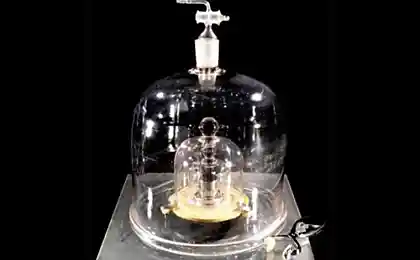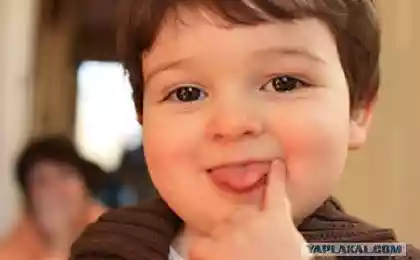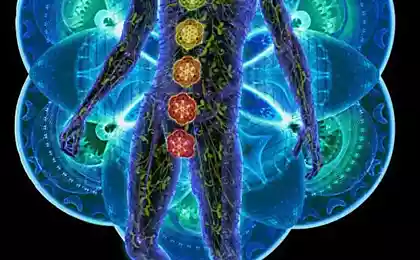497
Did You know that the kilogram is getting heavier?
According to researchers from the University of Newcastle in the United Kingdom, kilogram is getting heavier. How can this be? Mainly because we're talking about the reference kilogram.

International prototype (standard) kilogram kept at the International Bureau of weights and measures (located in sèvres near Paris) and is a cylinder with a diameter and a height of 39.17 mm platinum-iridium alloy (90 % platinum, 10 % iridium). Originally, kilogram was defined as the mass of one cubic decimeter (liter) of pure water at 4 °C and standard atmospheric pressure at sea level.
So why is it heavier ?

Using unique technology Theta-sensing, Professor Peter Kempson and doctor Naoko Sano of Newcastle University have analyzed surfaces of the standard and determined that the international prototype (standard) kilogram quantitatively increased hydrocarbon contamination on its surface. Their research suggests that the international prototype (standard) pounds, probably gained tens of micrograms in mass, since the standard was introduced in 1875. But as it pounds, which should correspond to all the weight in the world, in a theoretical sense at least, all the weight will be technically harder, too.
Although the increase of the standard kilogram in the tens of micrograms may seem insignificant, Peter Compson claims any discrepancy between the International prototype (standard) kg and its Replicants can be problematic. "There are cases of international trade with materials of high value – where every last microgram must be accounted for." Accrued hydrocarbons can be removed by exposure of the mixture to ultraviolet rays and ozone.
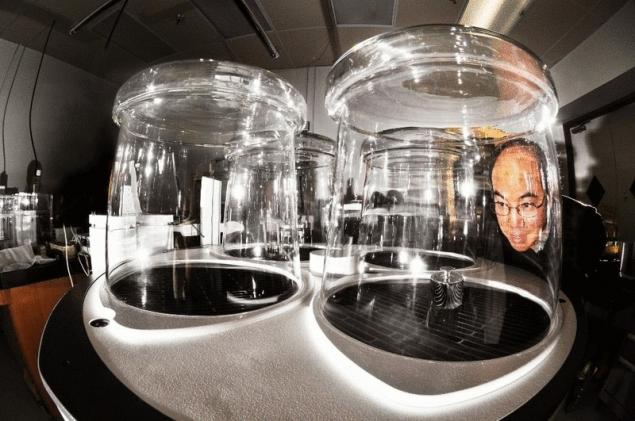
The situation is complicated by the fact that there are 39 exact copies stored in Paris, the standard kilogram, which at the time were sent to different countries to maintain a unified system of weights and measures. Now, according to some scientists, they are becoming more different from each other in weight due to climatic and other conditions existing in different parts of the world.
"What happened in the world of industrialization and the functioning of modern society has led to the fact that the surface of the standard kilogram has purchased a plaque in the form of additional particles, — says the scientific team from the University of Newcastle. — The world system of standard weight was now at risk of creating chaos. We were horrified when we saw that on the surface is stored in the UK one of the 40 reference pounds accumulated particles of mercury," — said the head of works Professor Peter Kempson.
According to the publication, now being discussed whether to hold a special "dusting" of all surfaces 40 of the reference kilograms, in order to return to them the same weight.
At the conference of the Royal society of London, 24-25 Jan Richard Davis, the former head of the Department of mass International Bureau of weights and measures (located in sèvres near Paris), proposed to soften the sharpness of the definition. In the interim, before redefinition "weight kilograms", he suggested averaging the controversial mass. So, if the results of two experiments of different types, by definition, mass is not entirely consistent, they should be simply averaged, and the resulting value to declare a new standard, quotes the proposal of the academic Nature News.
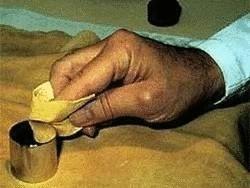
However, this plan has a lot of enemies. "The decision to simply average out the two discordant result would be absolutely mathematically correct, but it is not a scientific approach," said Michael HART, a physicist from the University of Manchester.
Supporters of the averaging see it as a way to move forward. "Ideally we need to achieve a perfect repeatability of the measurements. But if this fails, you need to use a mathematical approach," said Terry Quinn, former Director of the International Bureau of weights and measures. He stressed that the discrepancies in question are too small to create real problems for the practical application of the measures.
This difference is a serious problem in the long term, because it is impossible to assess whether the copies harder or, on the contrary, the standard is easier.
Therefore, scientists have long been planning to replace the "material" of the standard kilogram, expressing it through the unchanging constants of physics that are defined with high precision and do not change. If it succeeds, the weight of the kilogram will become as immutable as the laws of the Universe.
Scientists use two approaches to search for an exact expression of the kilograms in the first mass of the kilogram is determined by electric and magnetic fields, and in the second it is trying to Express through Planck's constant — one of the basic units of quantum mechanics.
The second method involves a direct conversion of the number of atoms in the field of crystalline silicon. This result allows us to redefine the kilogram in terms of Avogadro constant, which represents the number of molecules in a mole of a substance and, in fact, binds the atomic mass of element mass of a macroscopic body.
In recent years, measurements of both methods were carried out with an accuracy of 30 ppb is the limit for the most accurate measurements of the mass of a platinum-iridium cylinder. However, the results two types of experiments diverge at 175 ppb, is much more reasonable from a methodological point of view.
It is not possible to formally redefine the measure of a kilogram, as the reasons for the discrepancy are unclear and can not be eliminated. Therefore, a proposal was made to the elementary averaging two calculations and this mathematical redefinition of the kilogram.
The task of rewriting standard mass over time, becoming more and more acute. "The longer we wait and sit, the stronger the drift of the mass between the original model and its exact copies. Then we will never be able to agree about what kind of mass is considered as a reference. The situation is almost crazy," admits Quinn.
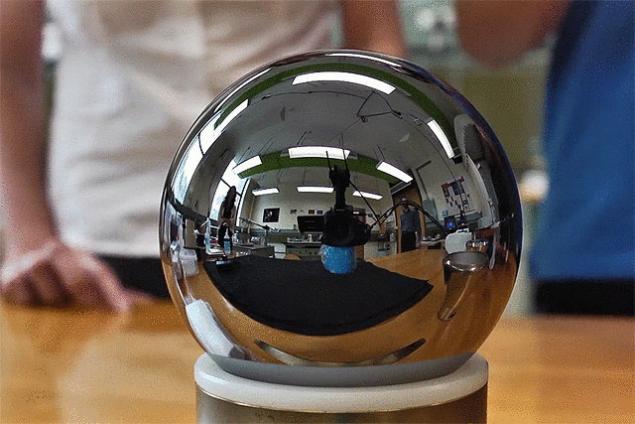
At the moment, scientists agree that the silicon atoms are ideal for this project due to its stability.Under standard conditions, they almost did not collapse and all the damage is easily calculable. "We want to redefine the kilogram based on the mass of an atom, we want to count the atoms in one kilogram of a particular crystal" said Professor Peter Becker "We measure the volume of a sphere and the volume of the silicon atom, and when you divide the silicon sphere volume of an atom, you get the number of atoms — all very simple." In the manufacture of standard involved scientists from many countries, including from Russia. To manufacture silicon spheres has been spent 2 million euros, and it was created almost 5 years. According to the head of the project, physicists have calculated how many silicon atoms should be in one kg and started the "Assembly", although this standard is not perfectly accurate, as long as scientists are unable to "collect" the standard literally to atoms.
Production Association "Electrochemical plant", Zelenogorsk, Krasnoyarsk region will provide the raw material for the creation of a new international standard kilogram — perfect ball from a single crystal of silicon-28 isotope, have informed Agency Interfax in the press-service of the enterprise.
The standard will be made in the form of a perfect ball from a single crystal of silicon-28 isotope.
The crystal is grown in the Institute of crystal growth of Germany from polycrystalline silicon, obtained in the Institute of chemistry of high-purity substances in Nizhny Novgorod. Source material for standard — silicon tetrafluoride — put Zelenogorsk ECP. published
P. S. And remember, only by changing their consumption — together we change the world! ©
Source: masterok.livejournal.com/

International prototype (standard) kilogram kept at the International Bureau of weights and measures (located in sèvres near Paris) and is a cylinder with a diameter and a height of 39.17 mm platinum-iridium alloy (90 % platinum, 10 % iridium). Originally, kilogram was defined as the mass of one cubic decimeter (liter) of pure water at 4 °C and standard atmospheric pressure at sea level.
So why is it heavier ?

Using unique technology Theta-sensing, Professor Peter Kempson and doctor Naoko Sano of Newcastle University have analyzed surfaces of the standard and determined that the international prototype (standard) kilogram quantitatively increased hydrocarbon contamination on its surface. Their research suggests that the international prototype (standard) pounds, probably gained tens of micrograms in mass, since the standard was introduced in 1875. But as it pounds, which should correspond to all the weight in the world, in a theoretical sense at least, all the weight will be technically harder, too.
Although the increase of the standard kilogram in the tens of micrograms may seem insignificant, Peter Compson claims any discrepancy between the International prototype (standard) kg and its Replicants can be problematic. "There are cases of international trade with materials of high value – where every last microgram must be accounted for." Accrued hydrocarbons can be removed by exposure of the mixture to ultraviolet rays and ozone.

The situation is complicated by the fact that there are 39 exact copies stored in Paris, the standard kilogram, which at the time were sent to different countries to maintain a unified system of weights and measures. Now, according to some scientists, they are becoming more different from each other in weight due to climatic and other conditions existing in different parts of the world.
"What happened in the world of industrialization and the functioning of modern society has led to the fact that the surface of the standard kilogram has purchased a plaque in the form of additional particles, — says the scientific team from the University of Newcastle. — The world system of standard weight was now at risk of creating chaos. We were horrified when we saw that on the surface is stored in the UK one of the 40 reference pounds accumulated particles of mercury," — said the head of works Professor Peter Kempson.
According to the publication, now being discussed whether to hold a special "dusting" of all surfaces 40 of the reference kilograms, in order to return to them the same weight.
At the conference of the Royal society of London, 24-25 Jan Richard Davis, the former head of the Department of mass International Bureau of weights and measures (located in sèvres near Paris), proposed to soften the sharpness of the definition. In the interim, before redefinition "weight kilograms", he suggested averaging the controversial mass. So, if the results of two experiments of different types, by definition, mass is not entirely consistent, they should be simply averaged, and the resulting value to declare a new standard, quotes the proposal of the academic Nature News.

However, this plan has a lot of enemies. "The decision to simply average out the two discordant result would be absolutely mathematically correct, but it is not a scientific approach," said Michael HART, a physicist from the University of Manchester.
Supporters of the averaging see it as a way to move forward. "Ideally we need to achieve a perfect repeatability of the measurements. But if this fails, you need to use a mathematical approach," said Terry Quinn, former Director of the International Bureau of weights and measures. He stressed that the discrepancies in question are too small to create real problems for the practical application of the measures.
This difference is a serious problem in the long term, because it is impossible to assess whether the copies harder or, on the contrary, the standard is easier.
Therefore, scientists have long been planning to replace the "material" of the standard kilogram, expressing it through the unchanging constants of physics that are defined with high precision and do not change. If it succeeds, the weight of the kilogram will become as immutable as the laws of the Universe.
Scientists use two approaches to search for an exact expression of the kilograms in the first mass of the kilogram is determined by electric and magnetic fields, and in the second it is trying to Express through Planck's constant — one of the basic units of quantum mechanics.
The second method involves a direct conversion of the number of atoms in the field of crystalline silicon. This result allows us to redefine the kilogram in terms of Avogadro constant, which represents the number of molecules in a mole of a substance and, in fact, binds the atomic mass of element mass of a macroscopic body.
In recent years, measurements of both methods were carried out with an accuracy of 30 ppb is the limit for the most accurate measurements of the mass of a platinum-iridium cylinder. However, the results two types of experiments diverge at 175 ppb, is much more reasonable from a methodological point of view.
It is not possible to formally redefine the measure of a kilogram, as the reasons for the discrepancy are unclear and can not be eliminated. Therefore, a proposal was made to the elementary averaging two calculations and this mathematical redefinition of the kilogram.
The task of rewriting standard mass over time, becoming more and more acute. "The longer we wait and sit, the stronger the drift of the mass between the original model and its exact copies. Then we will never be able to agree about what kind of mass is considered as a reference. The situation is almost crazy," admits Quinn.

At the moment, scientists agree that the silicon atoms are ideal for this project due to its stability.Under standard conditions, they almost did not collapse and all the damage is easily calculable. "We want to redefine the kilogram based on the mass of an atom, we want to count the atoms in one kilogram of a particular crystal" said Professor Peter Becker "We measure the volume of a sphere and the volume of the silicon atom, and when you divide the silicon sphere volume of an atom, you get the number of atoms — all very simple." In the manufacture of standard involved scientists from many countries, including from Russia. To manufacture silicon spheres has been spent 2 million euros, and it was created almost 5 years. According to the head of the project, physicists have calculated how many silicon atoms should be in one kg and started the "Assembly", although this standard is not perfectly accurate, as long as scientists are unable to "collect" the standard literally to atoms.
Production Association "Electrochemical plant", Zelenogorsk, Krasnoyarsk region will provide the raw material for the creation of a new international standard kilogram — perfect ball from a single crystal of silicon-28 isotope, have informed Agency Interfax in the press-service of the enterprise.
The standard will be made in the form of a perfect ball from a single crystal of silicon-28 isotope.
The crystal is grown in the Institute of crystal growth of Germany from polycrystalline silicon, obtained in the Institute of chemistry of high-purity substances in Nizhny Novgorod. Source material for standard — silicon tetrafluoride — put Zelenogorsk ECP. published
P. S. And remember, only by changing their consumption — together we change the world! ©
Source: masterok.livejournal.com/

